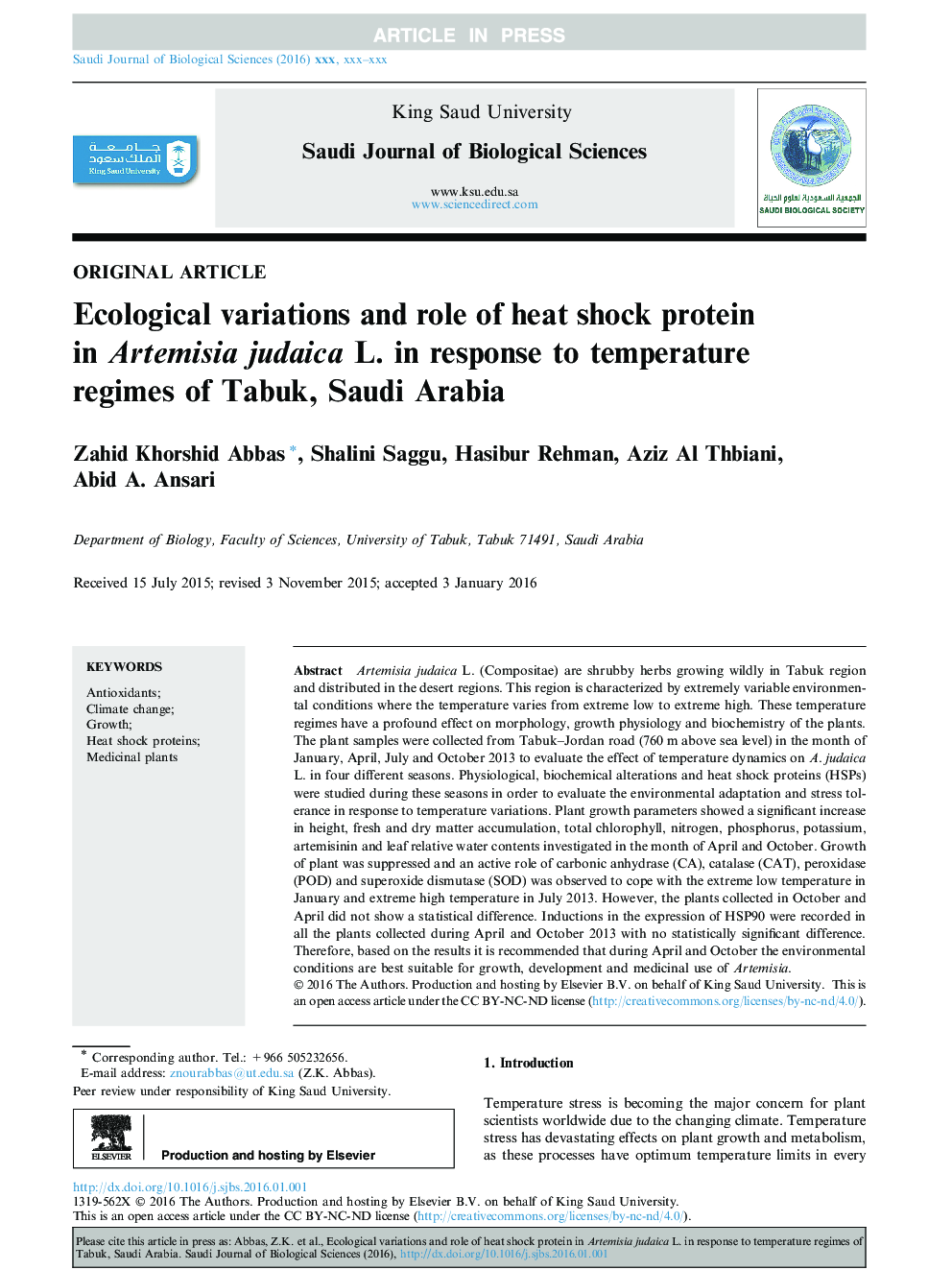| Article ID | Journal | Published Year | Pages | File Type |
|---|---|---|---|---|
| 8850116 | Saudi Journal of Biological Sciences | 2017 | 6 Pages |
Abstract
Artemisia judaica L. (Compositae) are shrubby herbs growing wildly in Tabuk region and distributed in the desert regions. This region is characterized by extremely variable environmental conditions where the temperature varies from extreme low to extreme high. These temperature regimes have a profound effect on morphology, growth physiology and biochemistry of the plants. The plant samples were collected from Tabuk-Jordan road (760Â m above sea level) in the month of January, April, July and October 2013 to evaluate the effect of temperature dynamics on A. judaica L. in four different seasons. Physiological, biochemical alterations and heat shock proteins (HSPs) were studied during these seasons in order to evaluate the environmental adaptation and stress tolerance in response to temperature variations. Plant growth parameters showed a significant increase in height, fresh and dry matter accumulation, total chlorophyll, nitrogen, phosphorus, potassium, artemisinin and leaf relative water contents investigated in the month of April and October. Growth of plant was suppressed and an active role of carbonic anhydrase (CA), catalase (CAT), peroxidase (POD) and superoxide dismutase (SOD) was observed to cope with the extreme low temperature in January and extreme high temperature in July 2013. However, the plants collected in October and April did not show a statistical difference. Inductions in the expression of HSP90 were recorded in all the plants collected during April and October 2013 with no statistically significant difference. Therefore, based on the results it is recommended that during April and October the environmental conditions are best suitable for growth, development and medicinal use of Artemisia.
Related Topics
Life Sciences
Environmental Science
Ecology
Authors
Zahid Khorshid Abbas, Shalini Saggu, Hasibur Rehman, Aziz Al Thbiani, Abid A. Ansari,
